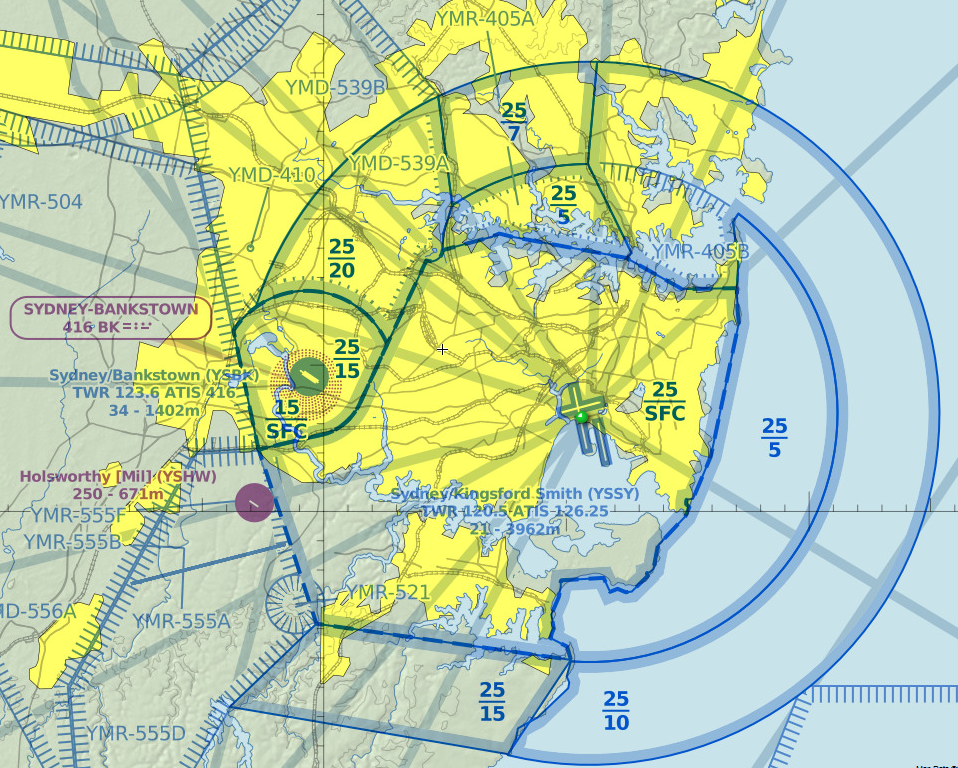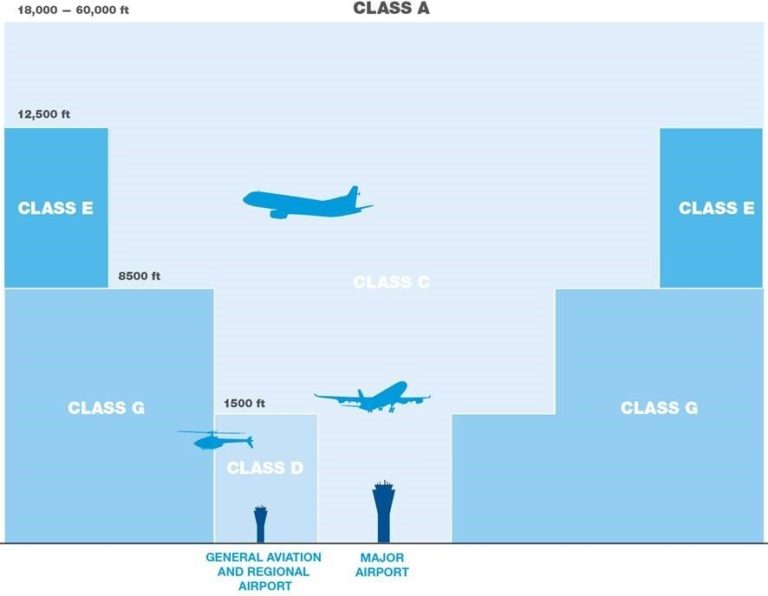class g airspace australia
The Phoenix location at the Deer Valley Airport KDVT one of the busiest airports in the world provides pilots with Class B E and Class G airspace. Policy consultation CASA published a Discussion Paper DP on 27 February 2017.

3 Airspace Classes Courtesy Of U S Department Of Transportation Download Scientific Diagram
Each day around 6000 aircraft and 600000 people fly above our heads in UK skies.

. This radio frequency is used for non-controlled or Class G aerodromes or airports at which the control tower closes overnight. IFR and VFR flights receive a flight information service. Controlled airspace is further defined by categories with specific aircraft performance equipage and pilot qualification requirements and is actively monitored and managed by ATC.
North of 65S this flight information service includes directed traffic information to IFR flights on other IFR flights and known VFR flights. CASA has conducted extensive consultation on this issue since early 2017 and is ready to provide advice to industry of what the appropriate frequency is to use at low level in Class G airspace. There are two major types of airspace in Australia.
HF frequencies and boundaries are shown on the AlP PCA. Transition from GAAP to Class D Australia used to have a non-standard class of airspace for use at the capital city general aviation airports called a General Aviation Airport Procedures Zone GAAP Zone. Frequency use at low level in Class G airspace - CD 1802AS Closed 14 May 2018 Opened 27 Apr 2018 Contact 131 757 regulatoryconsultationcasagovau Results updated 18 Oct 2018 This consultation proposed the use of 1267 MHz specifically in the circuit area of uncharted aerodromes instead of the current recommendation to use the area frequency.
In Class E airspace IFR aircraft must obtain a clearance but VFR flights do not require a clearance. Larger passenger aircraft general aviation aircraft light sport aircraft. If outside VHF range a listening watch should be maintained on the relevant HF frequency.
Class G uncontrolled airspace exists below the control areas and extends from the surface to the. Be heard be seen be safe Our booklet called. Sky Harbor about 15 miles outside our campus is the main commercial airport in Phoenix providing Class B airspace plus with 18 of the 92 local airports being tower controlled this allows.
At any time this mix might include. A non-controlled aerodrome is an aerodrome in non-controlled airspace also known as Class G airspace. 14 rows These minimums cover most Class G airspace but are only valid during the daytime.
Sydney terminal control area is controlled by Airservices Australia. Class G Class G is uncontrolled airspace and accounts for the majority of Australian airspace. The Government is committed to ensuring that appropriate levels of airspace classification and air traffic services are used to protect regional aerodromes served by passenger transport services with airspace classification and services reflecting the final outcomes of the risk reviews undertaken.
The DP included two options which were. Here is a list of Caloundra CTAF Radio Callsin printable PDF form. Class G is used wherever other classes are notalmost always from the surface to the base of the overlying Class A C D or E airspace.
Generally base 8500 ft AMS Surrounding or overlying some CTR Some low-level terminal airspace when the associated TWR is closed. The diagram below represents the classes of airspace in Australia and how they connect and overlap. Boundaries of Class G Airspace It extends from the surface to the base of the overlying Class E airspace.
Some non-controlled aerodromes host a huge diversity of aircraft. Class G airspace extends from the surface to either 700 or 1200 feet AGL depending on the floor of the overlying Class E airspace. More information on classes of airspace is available.
Class G airspace is uncontrolled airspace that has not been designated as Class A B C D or E. Airspace which is not Class AE. The name of the aerodrome.
114 Airspace standards 5 12 Class G Airspace 5 121 Description of Australian Class G airspace 5 122 History of change to Class G airspace 6 123 Safety issues associated with current Class G airspace 7 124 Cost of directed traffic information 10 125 Compliance with ICAO requirements 10 126 Comparison with overseas systems 11. Class G airspace is the portion of the airspace that has not been designated as Class A B C D or E. You must follow the Basic Radio rules as per the CASA website.
IFR and VFR flights are permitted. At NATS we manage a complex invisible infrastructure that helps a diverse variety of airspace users including leisure commercial cargo and military users to operate safely in the sky. Typically Class G airspace includes all of the airspace below 14500 ft.
Where the requirements of this document differ from those contained in the GFA Operational. That is not otherwise designated Class B C or D airspace. It is therefore designated as uncontrolled airspace.
Within continental Australia outside radar coverage above FL180 where Class A base is FL245 Within radar coverage in specifc locations or corridors under Class C or Class A airspace. In Australia operating in Class G airspace at or above 5000 feet AMSL VHF radio is mandatory AND pilots should maintain a listening watch on the appropriate VHF frequency for the area. Below is a brief guide to how the.
A broadcast CAR 166C must include. This document provides guidance for the conduct of gliding operations in Australian airspace and is to be read in conjunction with the Manual of Standard Procedures Part 2 Operations. The total volume of Class G airspace within 45 nautical miles of Sydney varies depending on the activation of various restricted areas and control zones.
The level of service an aircraft receives from air traffic control and the classes of airspace in which it can fly are determined by whether it is operating under visual flight rules VFR or instrument flight rules IFR. The service provided by air traffic controllers depends on the class of airspace and there are three broad types. Helicopter Online Ground School provides Private Pilot Instrument Pilot Commercial Pilot and Certified Flight Instructor Memberships.
Uncontrolled airspace also referred to as Class G airspace has very. This class is not used at present in Australian-administered airspace. Class G airspace.
In Australia these range from Class A typically en route high level airspace to Class G uncontrolled airspace predominantly used by light aircraft. In Australian Class G airspace third-party directed traffic information is provided to pilots of aircraft operating under the instrument flight rules. Class G airspace or uncontrolled airspace has the lowest level of service and the fewest restrictions on aircraft operations.
Non Controlled Airspace Pilot Practice Exams Com

Class C Airspace All The Details You Need To Know Pilotmall Com

How To Memorize Airspace In 5 Minutes Youtube

Australian Airspace Classification System

Ep 42 Class A Airspace Explained And Where It Is Youtube

Douglas A 4g Skyhawk Royal Australian Navy Royal Australian Air Force Naval Aviator

Airspace Classes Types Of Airspace Classes And How They Are Defined Atp Flight School

I Busted The Sydney Airspace Help Charts Navigation And Flightplanning Help Vatsim Community

Lighthouse Lighthouse Drawing Lighthouse Art

Vmc In Australian Airspace Youtube

Class D Airspace Explained Boldmethod

The Two Main Classifications Of Airspace



